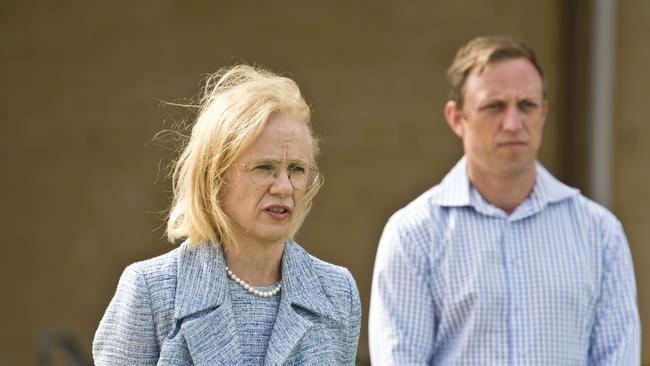Coronavirus: Queensland suburbs most vulnerable to virus strike
Older residents and those with existing health issues have been identified as most at risk of serious infection from COVID-19. These are the Queensland suburbs where coronavirus could take the biggest toll.
QLD Coronavirus News
Don't miss out on the headlines from QLD Coronavirus News. Followed categories will be added to My News.
AREAS of the state with a higher population of people with chronic diseases could be at increased risk of infection during the COVID-19 pandemic with some regions recording more than 40 per cent of people within its population over the age of 60 to have three or more chronic health conditions.
Coronavirus Queensland: Recovery rates for each region revealed
Coronavirus Queensland: Schools to reopen for term 2, 7 new cases overnight
Coronavirus Queensland: 496 people fined for breaching coronavirus restrictions
Health authorities have said older people, particularly those with pre-existing medical conditions like asthma, diabetes, heart disease or weakened immunity are most at risk of serious infection.
Consultant Physician in Infectious Diseases at Wesley Medical Centre Dr Paul Georghiou said people with chronic health conditions, typically over 60 years of age, are at increased risk of complications including respiratory failure, need for mechanical ventilation, multiple organ failure and death.

Regions such as Riverview, southwest of Brisbane have 41.8 per cent of people with three or more chronic health conditions within the population of 60 years and over.
Other areas, such as Inala, Beenleigh, and Kelso in Townsville have percentages of 37.8, 36.1, and 35.7 respectively.
“Accordingly, those persons in this category will need a heightened level of alert and care,” he said.
“In areas identified as having higher numbers of at-risk individuals, it makes intuitive sense to intensify efforts to prevent higher-risk individuals coming into contact with infected persons. This can be achieved by intensified local education programs via local media and community organisations, heightened surveillance programs — such as door-to-door checks, social media inquiries, text messaging, home and mobile telephone inquiry, and co-operative liaisons with home security and health security providers.”
Dr Georghiou said the impact of coronavirus infection on older or at-risk persons would include potentially more severe disease, increased hospitalisation, longer hospital stays, increased mortality, and increased associated social disruption through effects on family, friends and social and employment associates.
Queensland Health, which already had initiatives in place providing specialist care for sections of the state where chronic disease, age and other risk factors are more prevalent, said it was critical everyone complies with Chief Health Officer Jeannette Young’s directives – not just people who are at-risk of developing serious complications from the disease.
“The best way to protect vulnerable people from COVID-19 is to minimise transmission across the entire state,” a Queensland Health spokesman said.
“In line with our state and federal partners, we are urging all vulnerable people to self-quarantine and limit contact with others as much as possible.”
Premier Annastacia Palaszczuk yesterday said although Queensland did not have community transmission like New South Wales and Victoria, the state was a long way off lifting restrictions.
“We’ve only just started this journey and like I said we haven’t even started the climb of the curve yet and that does mean unfortunately that we will see deaths in Queensland but how many deaths depends on the great work Queenslanders are doing,” she said.
“What we are showing is that we are still seeing positive cases and what that does mean is a lot of them are still coming from overseas so while we still have people returning from overseas and hot spots we are going to continue to see an increase in those numbers unfortunately.”


